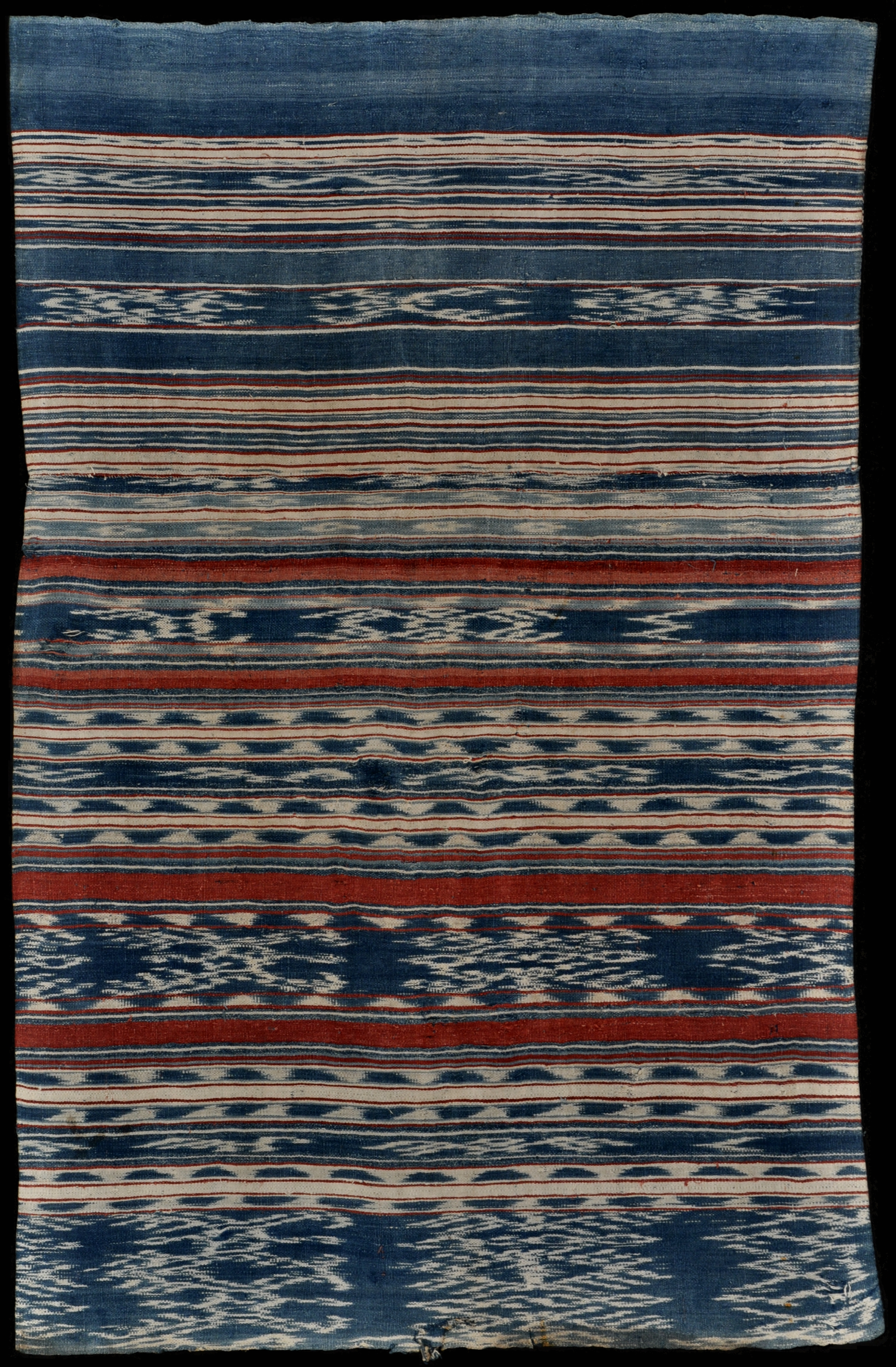| |
 mouse over to magnify mouse over to magnify
| | | | 078 Moluccas, Seram
Ute-ute (sarong)
| | Locale: | Tambilau, a hamlet on southern Seram. | | Period: | 1900-1930 | | Panels: | 2 | | Design: | Narrow bands with shimmering patterns in white on three shades of indigo, alternated with narrow bands and stripes in aubergine and mauve. The larger motifs may represent crocodiles, a common motif in the wider region (including Timor and Tanimbar). The top panel which constitutes roughly the top one third of the sarong, is much narrower than the bottom panel, which constitutes the main body. The shimmering effect is seen on most, though not all Seram cloths, and is one of their characteristic features. | | Size: | 66 x 107 cm (25.9 x 42.1 in) | | Yarn: | Cotton, hand-spun, medium | | Comment: | Sarong, locally called ute-ute, probably made for the age-old 'kain-timur' trade with New Guinea. Some fraying and a few holes. Several old repairs. Somewhat soiled. Still a curiously attractive piece, probably because of its fresh, striking colours. Given the fact that a high percentage of Seram pieces in the few museums that have them are damaged, some very seriously, the condition of this piece is quite cheerful - probably the result of it having evaded trade to New Guinea, and having landed in Tanimbar instead, where it was acquired in the late 1970s. By the time of the Frobenius expedition to the Moluccas in 1937/38 ikat weaving on Seram had already been nearly extinguished. | | Background: | Additional information in chapters on Moluccas and Seram. | | Published: | Woven Languages, 2014.Ikat Textiles of the Indonesian Archipelago, 2018.
| | Compare: | 269 | | Sources: | This cloth was acquired along with a set of sarongs from Tanimbar, and was long assumed to be from Tanimbar as well, as its origin was described as 'Tambilau, Tanimbar'. The Seram origin was identified by Vanessa von Gliszczynski, Research Curator at the Weltkulturen Museum in Frankfurt, which has several Seram cloths. Investigation showed that there is no Tambilau on Tanimbar, but that a Tambilau on Seram is mentioned in a 1982 Dutch government document on Moluccans who fled to Holland after Indonesia's independence, referring to as a 'negorij', a formerly common term for any poor native hamlet. Similar patterning on partly ikated sarong from before 1882, depicted in Leigh-Theisen & Mittersakschmöler, Textilien in Indonesien, Abb. 165; and on sarongs in collection Tropenmuseum, Nr. 2481-1, 2481-27 and 2481-68. Also similar to cloth for sarong RV-3092-94. | | |
 ©Peter ten Hoopen, 2025
All rights reserved.
|
|


